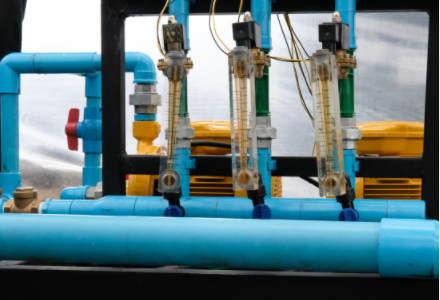Pressure scanners and associated pressure measurement data systems can give engineers and scientists access to large amounts of pressure measurement data for critical aerodynamic studies. Initium and Optimus data Systems from the heritage brand Pressure Systems Inc. (PSI), combined with small ESP pressure scanning valves, provide accurate and reliable pressure measurement solutions for the industrial aerodynamics, wind tunnel research and building engineering research and testing markets.



Ⅰ、Overall overview
Wind tunnel simulation tests are typically performed on small-scale models before high-rise buildings, stadiums, long-span roofs, and long-span Bridges are built. These boundary layer wind tunnels use a 360-degree turntable to simulate multi-direction winds and operate at low speeds. Ground-effect boundary layers are also simulated in these tests, and the aim of aerodynamic studies is to determine wind interactions with buildings, structures, and terrain to improve design, efficiency, and reliability.
Ⅱ、Pressure measurement
The DTC Initium pressure test system and Optimus pressure test system are ideal for measuring dynamic wind tunnel wall and model pressure. The Ethernet-connected ESP pressure scan valve supports 16,32,64 channels. These pressure scan valves can be directly placed in the test environment through the trachea to communicate with the host module of the system, thereby minimizing the complexity of the system installation and the cost per channel.
DTC Initium pressure measurement system
The DTC Initium data acquisition system is TE's DTC series of small pressure scanning acquisition systems. The DTC Initium system integrates analog circuit design with digital temperature compensation (DTC) technology to maintain optimal accuracy without in-line range calibration. The Ethernet-based system connects directly to any combination of up to eight 16 -, 32 -, or 64-port DTC scanners to meet pressure measurements of up to 512 channels, and multiple systems can be networked to meet larger measurement channel requirements.

The ESP pressure scanner is a miniature electronic differential pressure measurement device consisting of an array of silicon piezoresistive pressure sensors, one for each pressure port, mounted on a general-purpose hybrid ceramic substrate using proprietary technology to maximize long-term stability. Pressure measurement ranges from 10 "H2O to 150 PSI. Options include a cleaning capability isolated from the pressure sensor to remove moisture and contamination. Other options include digital temperature compensation technology, currently employed gen2 amplifier technology. The pressure scanning valve contains an internal pneumatic valve to allow the user to:
1. Pressure measurement;
2. Zero calibration;
3. Multi-point calibration (pre-flight or in-flight);
4. Purge operation (cleaning condensate and other contaminants in the input line).

The ESP pressure scan valve can also be installed in an optional compact insulated thermal control unit, the heating tank. The heating tank has a heating circuit to regulate the temperature of the sensor to maintain thermal stability at extreme temperatures.

Optimus pressure measuring system
The Optimus Data Acquisition System is TE's high performance electronic pressure scanning acquisition system, providing high accuracy and high throughput data for up to 2048 measurement channels. The pressure signals were acquired by ESP series pressure scanners and converted to digital values in the mSDI, a micro-scanner digital interface unit. Measurements were calculated in the Optimus system processor and reports were generated over Ethernet at data rates up to 1Gbit/s.

Ⅲ、Application examples
1. Our DTC-Initium model and ESP series pressure scan valves can meet the aerodynamic pressure measurement requirements when the number of pressure channels to be measured is small. The DTC-Initium system uses the ESP series pressure scan valve. The connection required for system operation is simple, and the user can obtain or provide power using the 9IFC module, providing a convenient interface for power regulation, hardware triggers, and Ethernet communication. The ESP pressure scanning valve module is connected to the FDS-Initium host via 9082 cable.

2. Our Optimus pressure acquisition system can meet the aerodynamic pressure measurement requirements when the number of pressure channels to be measured is large. The Optimus system supports up to 2048 pressure channels, the ESP pressure scanner is compatible, and the RP remote processor is used to provide accurate pressure calibration and performance verification operations before testing begins. The Optimus system integrates a variety of function-specific cables to provide high accuracy, fast, and reliable operation for various types of pressure tests.








